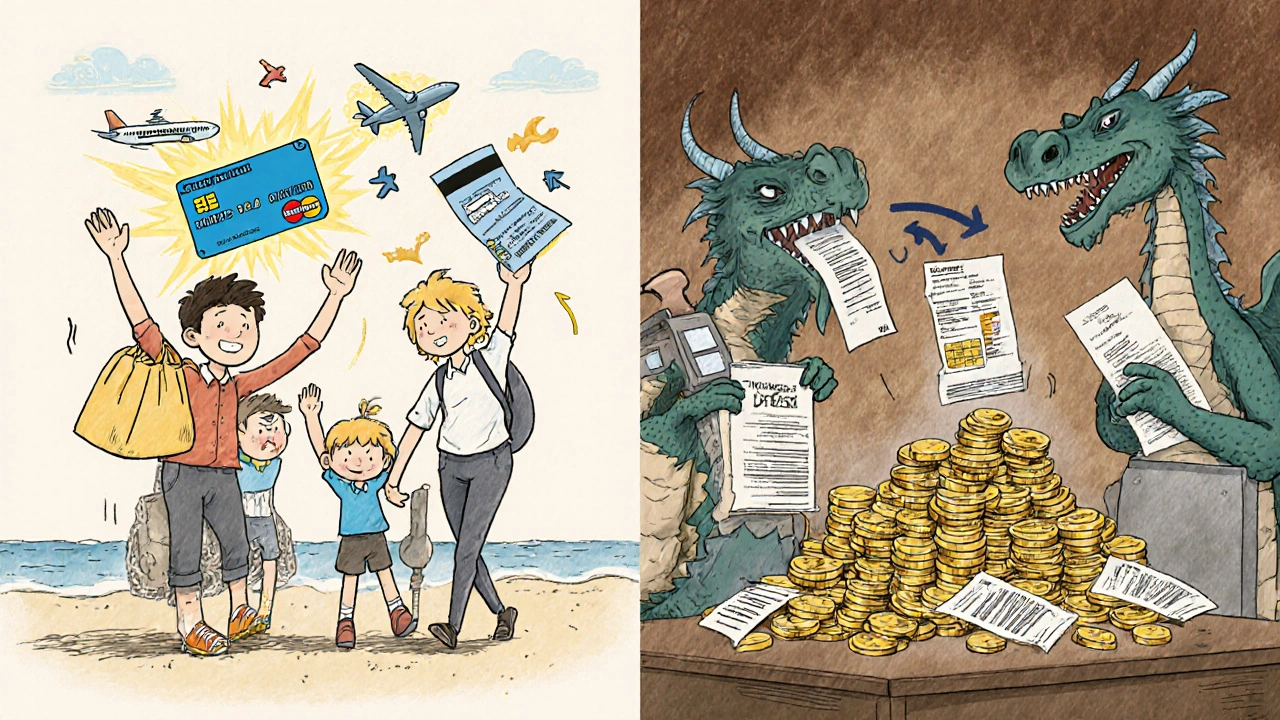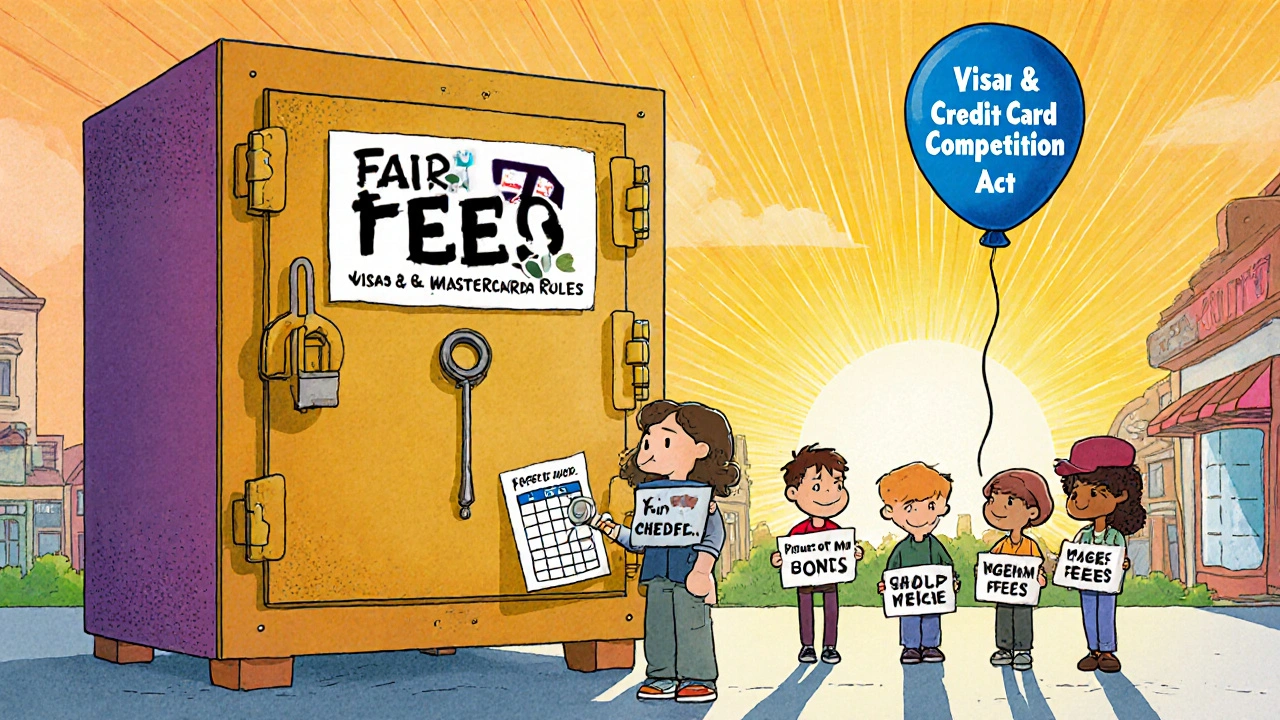Interchange Fee Calculator
What Are Interchange Fees?
When you swipe a credit card at a coffee shop, the merchant doesn’t just get paid - they also pay a fee. That fee? Most of it goes to the bank that issued the card, not the payment processor or network. This is called an interchange fee.
Think of it like a toll on the payment highway. Every time a card is used, the merchant’s bank (acquirer) pays the customer’s bank (issuer) a fee to cover the cost of approving the transaction, handling fraud, and funding rewards like cash back or travel points. According to BigCommerce’s 2023 data, interchange fees make up 70% to 90% of everything a merchant pays to accept cards.
These fees weren’t invented yesterday. They started in the 1970s when Visa (then BankAmericard) and Mastercard (then Interbank) needed a way to make banks willing to issue cards and let them be used everywhere. Without interchange fees, banks wouldn’t have had a reason to spend money on card programs - and consumers wouldn’t have gotten rewards.
How Much Do Merchants Pay?
There’s no single rate. Interchange fees vary wildly depending on the card, the merchant, and how the transaction is processed.
For a standard credit card transaction in the U.S., you’ll typically see rates between 1.15% + $0.05 and 3.30% + $0.10. Here’s how it breaks down:
- Basic credit cards: Around 1.5% to 2.0% + a few cents
- Premium rewards cards (like Visa Signature or American Express Platinum): Up to 2.65% + $0.10
- Debit cards: Much lower - about 0.3% + $0.15, thanks to the Durbin Amendment
- American Express: Often 1.43% to 3.30% because they handle both issuing and acquiring - and their customers spend more
For example, if a restaurant takes a $50 credit card payment, they might pay $1.20 in interchange fees - that’s 2.4%. But if the customer used a basic debit card, the fee would be under 30 cents.
Why Do Rates Vary So Much?
It’s not random. Card networks like Visa and Mastercard set rules based on dozens of factors. Here are the big ones:
- Merchant Category Code (MCC): Grocery stores (MCC 5411) pay around 1.43% + $0.10. Restaurants (MCC 5812) pay 2.40% + $0.10. Why? Because restaurants have higher fraud risk and smaller margins.
- Card-present vs. card-not-present: Swiping a card at the register (card-present) costs about 1.85%. Online or phone orders (card-not-present) cost 2.35% or more because fraud is harder to prevent.
- Transaction size: Larger transactions often have lower percentage rates but higher flat fees. A $1,000 sale might cost less per dollar than a $10 sale.
- Settlement speed: If a merchant doesn’t settle transactions within 24-48 hours, they get hit with a “non-qualified” rate - which can add 0.5% to 1.5% extra.
- Card type: Business cards, rewards cards, and premium cards all cost more. Visa Infinite cards can add 0.4% extra compared to standard cards.
These aren’t hidden fees - they’re published. But most small business owners never dig into the details. That’s how you end up paying $1,300 in interchange fees on $65,000 in sales without realizing why.

U.S. vs. Europe: A Stark Difference
Merchants in the U.S. pay nearly 7 times more in interchange fees than those in Europe.
In the European Union, credit card interchange fees are capped at 0.3% and debit at 0.2% since 2018. That’s it. No exceptions. The result? Merchants saved €5.2 billion annually, according to the European Central Bank.
In the U.S., there’s no cap. The average merchant pays about 2.05% per transaction. That’s $117.8 billion paid by U.S. merchants in 2022 alone, according to the Retail Industry Leaders Association. And they get nothing back - no service, no transparency, no negotiation power.
Why the difference? Europe decided the system was unfair. The U.S. lets card networks set their own rules. And those rules favor issuers and rewards programs - not merchants.
Who Benefits? Who Loses?
Interchange fees fund the perks you love: 2% cash back, airline miles, hotel upgrades. NerdWallet estimates these fees pay for about 68% of credit card rewards.
But here’s the catch: the people who benefit most from rewards are often the ones who pay off their balance every month - not the ones carrying debt. Meanwhile, small businesses - especially restaurants, retail shops, and service providers - are stuck paying higher prices just because customers use cards with big rewards.
And it’s getting worse. Since 2018, interchange fees have risen 27%, according to the Nilson Report. Why? More premium cards, more fraud, and more complex reward structures. Visa and Mastercard added new categories in 2023 and 2024 for cards offering more than 5% cash back - charging merchants an extra 0.55% just for that.
Merchants don’t control any of this. They can’t say, “We won’t accept Amex.” They can’t refuse premium cards. They can’t even see the exact interchange fee on their statement - it’s buried under “processing fees” or “assessment fees.”

How Merchants Can Fight Back
You can’t eliminate interchange fees - but you can reduce their impact.
- Use interchange-plus pricing: Avoid tiered pricing. Interchange-plus shows you exactly what you’re paying for each transaction - the interchange rate + a fixed markup. It’s transparent. Most large processors offer it.
- Submit level 3 data: If you’re a B2B or wholesale merchant, send extra transaction details (like line items, tax amounts, customer ID). This can cut your fees by 0.3% to 0.8%. REI saved $2.1 million a year doing this.
- Settle transactions fast: Process batches within 24 hours. Delayed settlements trigger non-qualified rates - which can add hundreds to your monthly bill.
- Negotiate based on volume: If you process over $500,000 a month, you can often get 0.10% to 0.25% lower rates. Don’t accept the first quote.
- Know your MCC: If you’re a hybrid business - say, a bookstore that also sells coffee - you might be misclassified. Ask your processor to review your MCC. A small change can save you 1%.
One coffee shop owner in Boulder told me she paid $1,850 in processing fees last month. $1,300 of that was interchange. She switched to a processor that used interchange-plus and started submitting full transaction data. Her fees dropped 22% in two months.
The Future: Will Fees Go Down?
There’s movement. The Credit Card Competition Act, introduced in 2023 and advanced in April 2024, would require every card to support at least two payment networks. Right now, most cards are Visa-only or Mastercard-only. If merchants could route transactions to the cheapest network, fees could drop 40% to 50% - saving businesses $31 billion a year, according to the Congressional Budget Office.
But banks and card networks are fighting hard. The American Bankers Association warns that cutting fees would mean fewer rewards - and that’s true. But the question is: Should merchants pay for your vacation points?
Meanwhile, the Federal Trade Commission launched an investigation into interchange fees in September 2023. The European Commission is reviewing whether premium cards should still be exempt from the 0.3% cap - a decision due by December 2024.
Change is coming. But it’s slow. For now, merchants need to understand what they’re paying - and demand transparency.
Final Thought: It’s Not Just a Fee - It’s a Hidden Tax
Interchange fees aren’t optional. You can’t avoid them if you want to accept cards. And you can’t negotiate them like a supplier invoice. They’re built into the system, hidden in fine print, and rising every year.
That’s why so many small businesses are raising prices by 1% to 3% just to cover card costs. That’s why some set minimum purchase amounts. That’s why 82% of merchants say interchange fees hurt their pricing strategy.
It’s not about being anti-card. It’s about fairness. The system works for cardholders and banks. But for the person running the store? It’s a cost they didn’t ask for - and can’t control.




I’ve been running a small bookstore for 12 years, and I never realized how much of my processing fees were just going to fund someone’s free Hawaiian vacation. I switched to interchange-plus last year and started submitting level 3 data for wholesale orders - my fees dropped 18% in three months. It’s not glamorous, but it’s the only way to stay alive when your margins are thinner than a coffee stirrer.
YOOO the fact that Amex charges 3.3% and we’re stuck taking it because customers demand it is LIT. Like bro, I’m not charging you extra for your platinum card points - but I AM charging you $1.50 more for a latte because my rent went up and my processor won’t budge. Meanwhile, my cousin in Berlin pays 0.3% and still gets free coffee. The US system is a rigged casino and we’re all the suckers at the table.
This isn’t just about fees - it’s about systemic exploitation. The card networks have created a cartel that operates with zero accountability. In the EU, regulators had the guts to cap fees. Here? We have a Congress that takes millions in lobbying cash from Visa and Mastercard while small businesses bleed out. The Credit Card Competition Act isn’t radical - it’s basic antitrust. If you’re not screaming about this, you’re complicit. The next time you swipe your 2% cash-back card, ask yourself: who’s really paying for your ‘reward’?
It is truly fascinating how the economic architecture of modern commerce has evolved to externalize costs onto the most vulnerable participants - the small merchant - while enriching financial institutions and rewarding the financially prudent. One cannot help but reflect upon the moral implications of a system where the act of purchasing goods, a fundamental human activity, becomes a mechanism for wealth transfer from the laboring class to the capital-owning class. The absence of regulatory intervention in the United States, in contrast to the European model, speaks not to innovation but to captured governance. I wonder, if we were to restructure this system with ethical equity as its foundation, would we not be obligated to design a payment infrastructure that honors the dignity of the small business owner as much as it honors the convenience of the cardholder? Perhaps the solution lies not in mere fee caps, but in a reimagined social contract between commerce, finance, and community.